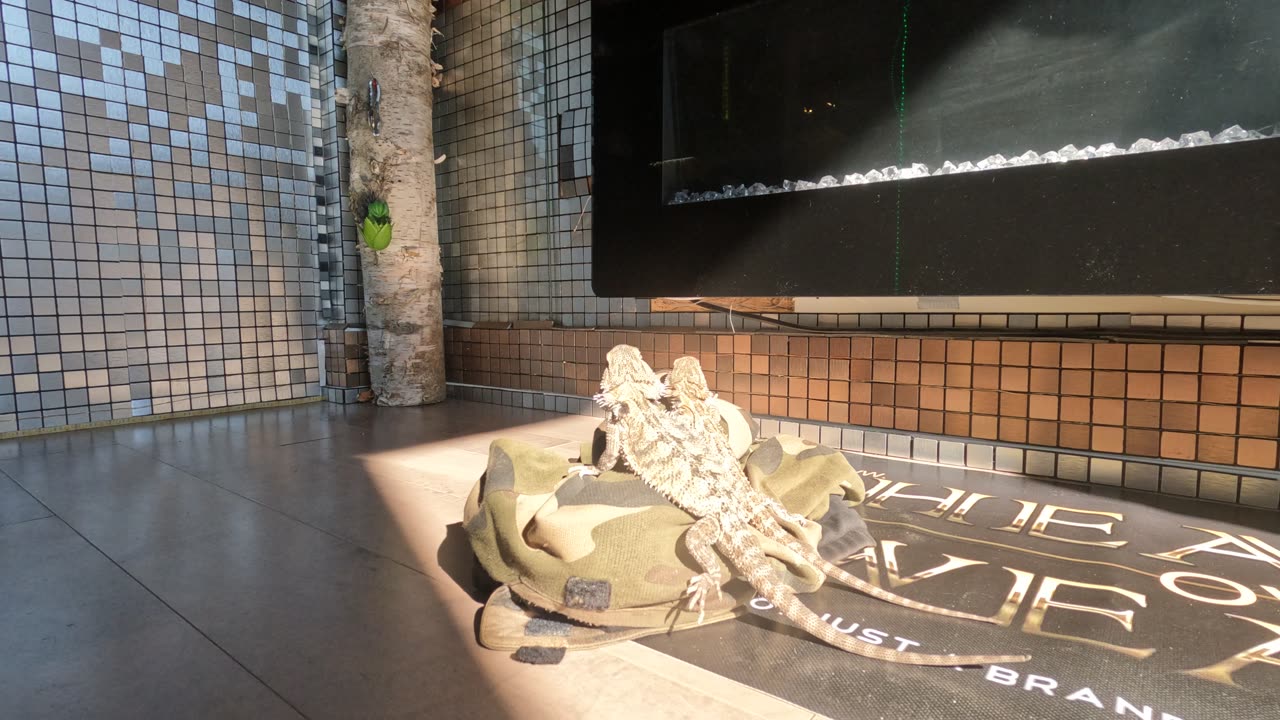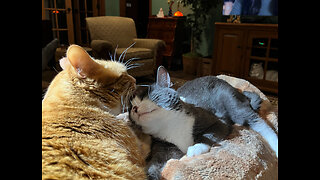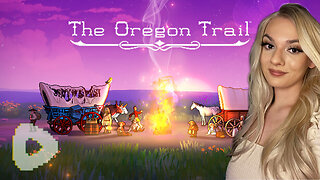Premium Only Content

🐉 Say Hello To My Little Dinosaurs 🦖 Meet Kobe & Health 🐲 Best Friends ☀️ 7 Months Old 🍼
Soaking In The Sun, While Stretching & Workout Outside Getting a Tan.
Pogona is a genus of reptiles containing eight lizard species, which are often known by the common name bearded dragons. The name "bearded dragon" refers to the underside of the throat (or "beard") of the lizard, which can turn black and become inflated for a number of reasons, most often as a result of stress, if they feel threatened,[2] or are trying to entice a mate. They are a semiarboreal species, spending significant amounts of time on branches, in bushes, and near human habitation.[3] Pogona species bask on rocks and exposed branches in the mornings and afternoons and sleep at night, making them a diurnal species. Their diet consists primarily of vegetation and some insects. They are found throughout much of Australia and inhabit environments such as deserts, and shrublands.[4]
Captive adult measuring over 30 cm (1 ft)
Galore Hill Nature Reserve, New South Wales, Australia
Skeleton at the Museum of Osteology in Oklahoma City, Oklahoma, United States
The genus Pogona is in the subfamily Amphibolurinae of the lizard group Agamidae. Bearded dragons are characterized by their broad, triangular heads, flattened bodies, and rows and clusters of spiny scales covering their entire bodies. When threatened, bearded dragons puff up their bodies and beards to ward off predators and make their somewhat dull spikes seem more dangerous. Bearded dragons display a hand-waving gesture to show submission (most often when acknowledging another bearded dragon's territory), and a head-bobbing display to show dominance[5] between dragons. Some have the ability to slightly change color in response to certain stimuli including rivalry challenges between males and ambient temperature changes (e.g., turning black to absorb heat). Bearded dragons occur in a variety of colors and morphs and can range from being all dark to completely white under controlled breeding conditions. Males grow up to 60 cm (24 in) long, and females up to 51 cm (20 in).
Bearded dragons live in the woodlands, heaths, deserts and coastal dunes,[6] with their range extending throughout the interior of the eastern states to the eastern half of South Australia and southeastern Northern Territory.[7] They are considered to be semiarboreal and quite readily climb and bask at height. This is also linked to dominance behavior and competition for territory/basking areas. They can be found on fallen/broken trees, rocky outcrops, and bushes when basking. Many of the Australian locals have spotted bearded dragons on fence posts and elevated rocky areas. At night, they prefer to dig holes to sleep in, climb in trees, or submerge themselves in rocks and like to climb into the cracks and crevices of stones and caves.[8]
Bearded dragons go through a type of hibernation called brumation, in which like hibernation, reptiles go months without eating, but sporadically drink water. Reptiles go dormant in the hottest temperatures, but it differs from brumation during cooler temperatures. When temperatures are extreme, a very small range of temperatures exists through which the reptile's bodies can stay active and where their bodies cannot tolerate the extreme heat and they die.[9] Bearded dragons go through brumation when the temperature goes below 15.5–21.0°C (60–70°F) during the night and 24.0–26.5°C (75–80°F) during the day for 8-10 hours.[10] When the climate is too hot they will often burrow underground.[11] They will also form more permanent burrows or covered hiding places to use as protection from the climate changes at night and predation.[12]
-
 17:50
17:50
Talk Nerdy Sports - The Ultimate Sports Betting Podcast
5 hours ago4/6/25: 🔥15-1 March Madness Run 🧠🔥 | MLB, NBA & PrizePicks Picks to Cook Your Bookie
49.4K6 -
 31:07
31:07
Real Coffee With Scott Adams
8 hours agoEpisode 2801 CWSA 04/06/25
65.3K44 -
 LIVE
LIVE
GrimmHollywood
6 hours ago🔴LIVE • GRIMM HOLLYWOOD • CLASSIC HALO • WITH THE ROCKSTARS of RUMBLE •
456 watching -
 LIVE
LIVE
MissesMaam
6 hours agoCan we survive the Oregon Trail ? 💚✨
258 watching -
 12:19
12:19
Mrgunsngear
1 day ago $7.71 earnedHUXWRX RAD 9 Suppressor Review
63K25 -
 LIVE
LIVE
JdaDelete
7 hours ago $0.09 earnedThe Legend of Zelda: Oracle of Seasons | Part 2
72 watching -
 LIVE
LIVE
LumpyPotatoX2
4 hours agoSub-Sunday with Casual Verdansk - #RumbleGaming
155 watching -
 23:50
23:50
marcushouse
18 hours ago $6.31 earnedStarship Is About to Do Something It’s Never Done Before - A Huge First!
62.1K19 -
 LIVE
LIVE
DJC GAME STUDIOS
2 hours ago $0.16 earnedThe Sunday BrUnCh StReAm - LIVE Retro Gaming with DJC
105 watching -
 LIVE
LIVE
FrizzleMcDizzle
4 hours agoElden Ring Seamless COOP
128 watching